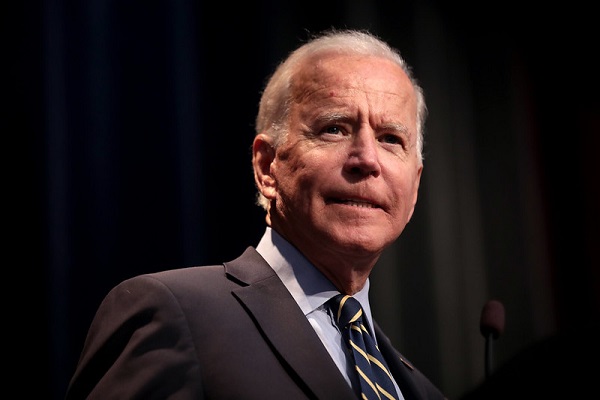
–>
October 29, 2022
The White House recently disclosed the fact that President Biden tried to convince Saudi Arabia to postpone the cuts in oil production until after mid-term the elections. This was an attempt to prevent the inevitable increase in the price of gasoline that would follow. Basic economic theory states that as supply decreases, price increases and vice versa.
‘); googletag.cmd.push(function () { googletag.display(‘div-gpt-ad-1609268089992-0’); }); }
To keep the prices down, Biden has been releasing oil from the nation’s oil reserves. That began in November of 2021. He just announced that he will release another 10 million barrels. This is an attempt to keep gas prices from rising before the elections in November. The cost of gasoline is rising again and is expected to continue to rise.
What has happened in a nutshell: “The great and sudden increase in the price of imported crude oil had a substantial effect on both the national and international economies. It helped to create inflation at home and transferred tens of billions of dollars from the oil-consuming nations to the oil-producing nations.”
That previous paragraph is in quotes because it comes from a term paper I wrote as a junior at the State University of N.Y. at Buffalo, School of Management. My Managerial Economics class required everyone to develop an econometric model explaining the demand for a chosen commodity. I chose gasoline.
‘); googletag.cmd.push(function () { googletag.display(‘div-gpt-ad-1609270365559-0’); }); }
At the time, the big deal in the world was an energy crisis. We were told to wear sweaters and cut down on driving because the world was going to run out of oil in the near future. That was in 1980. We were told there was an energy crisis, a future where the world was going to run out of oil, and we were headed for a new ice age because of global cooling. Check these magazine covers here. Seriously, read it in the December 24, 1979 issue of Time Magazine.
A new ice age, the “fact” that we were running out of oil, and we were in an energy crisis was that period’s climate change! The powers that be in Washington, D.C. created the Department of Energy in response to all the fear created when OPEC nations cut oil production. The following is right from the Office of Legacy Management and the history of the Department of Energy:
Until the 1970s, the Federal government played a limited role in formulating national energy policy in an era of relatively cheap and abundant energy. The nation relied on the private sector to fulfill most of its energy needs. Historically, Americans expected private industry to establish production, distribution, marketing, and pricing policies. When free market conditions were absent, Federal regulations were established to control energy pricing. were established to control energy pricing.
It’s interesting to note that until 1977, the United States relied on the private sector to deal with energy. The question is, has the department of energy done anything about the so-called energy crisis since its inception? We still seem to be in one crisis or another since 1977. Up until the Department of Energy was created, the private sector seemed to do a better job of managing itself in the free market. That should come as no surprise to those who adhere to a free-market economy.
What is happening today is similar to what happened in the 1970s: inflation at home, and the transfer of tens of billions of dollars from the oil-consuming nations to the oil-producing nations. This began to occur beginning January 2021 with President Biden signing an executive order canceling the XL Pipeline. Many other restrictions on the production of energy have led to a shortage and increased prices which add to inflation.
Many believe that inflation is caused only by the government’s printing of money, however, increases in the costs of products that are considered necessities also cause inflation. One of the biggest contributors to inflation is the cost of gasoline. In June of 2022, gasoline increased by 59.9 percent. During that same period, inflation in the United States was 8.5%. In the “energy crisis” of the 1970s and ’80s, gasoline inflation peaked at 68.1% in March of 1980, and inflation also peaked that same month at 14.8%. This is available at the U.S. inflation calculator.
‘); googletag.cmd.push(function () { googletag.display(‘div-gpt-ad-1609268078422-0’); }); } if (publir_show_ads) { document.write(“
Biden’s policies are defying the logic of economic theory — in a bad way. One of the facts that I discovered with creating my econometric model is that gasoline demand is seasonal. This means the time of year has an effect on the demand for gasoline. It’s a fact that the highest demand for gasoline occurs during the year’s third quarter; that would be July, August, and September. Demand begins to decline as we approach winter. The second lowest demand occurs in the years fourth quarter — October, November, and December. Demand falls to its lowest level in the first quarter — January, February, and March. It begins its rise in the second quarter, which is historically slightly higher than the fourth.
With gas prices rising in October and expected to continue to rise, this is in contrast to what usually occurs. Demand slows in the fourth quarter and places downward pressure on price. While the price may not drop, it is not typical to expect price increases. Yet that is exactly what we have due to the foolish policies of the Biden administration.
Supporters of Biden claim that his policies are not the cause of the price increases around the world. They claim that the problem is global. They are correct. That’s exactly why cutting production anywhere leads to price increases everywhere. Again, this is the fallout the world’s economies are feeling from Biden’s “war on the fossil fuel industries.” He did campaign on putting the fossil fuel industry out of business. He appears to be succeeding.
When talking about fossil fuel executives, Biden has also said, “We should put them in jail.” He also endorsed a carbon tax on the American people, which will force households to pay much higher gasoline, heating, and cooling bills. If there is a serious concern about too much carbon, why would they write a law that allows people to buy and sell carbon credits? Does that help the environment if one company can create more carbon than the law allows but buy credits to offset the tax?
With great arrogance, Biden has blamed the oil companies and gasoline stations for the rise in prices. This is either great audacity to blame the oil companies for his decisions or great ignorance of the laws of economics. They are called laws of economics for the same reason gravity is defined as the law of gravity. They always work in the same way. President Biden and the Democrats have blamed corporations for the price increases since shortly after inflation began. These accusations go back to November 2021. The accusation were wrong then, and they are wrong now.
It seems everything this administration does flies in the face of reality. The Inflation Reduction Act is by its substance a great oxymoron. Everything in it is inflationary. Again, it involves the printing of more money. But then again, perhaps the real purpose of the bill is to transfer money from one group to another — something the Democrats seem to be doing since the 2020 election. Inflation is at its worst when there is too much money in the hands of too few people chasing too few goods. This is exactly what the Inflation Reduction Act actually does.
The country and the world are in a mess right now. The current administration appears to be at the center of it.
David Ennocenti is a retired accountant and graduate of the State University of N.Y. at Buffalo, School of Management with a degree in Accounting and Finance. He passed the CPA Examination in 1983. His writing has appeared in American Thinker, USA Today, The New York Times, and several other publications. His screenplay, Sniper Queen, was an official selection of The Artemis Women in Action Films Festival. He is a past winner of the Writer’s Digest Annual Competition. His essay “1984 Arrived: Now What? How Progressive Policies Decimated a Once Vibrant Community” is available on Amazon.

Image: Gage Skidmore via Flickr, CC BY-SA 2.0.
<!– if(page_width_onload <= 479) { document.write("
“); googletag.cmd.push(function() { googletag.display(‘div-gpt-ad-1345489840937-4’); }); } –> If you experience technical problems, please write to [email protected]
FOLLOW US ON
<!–
–>
<!– _qoptions={ qacct:”p-9bKF-NgTuSFM6″ }; ![]() –> <!—-> <!– var addthis_share = { email_template: “new_template” } –>
–> <!—-> <!– var addthis_share = { email_template: “new_template” } –>






